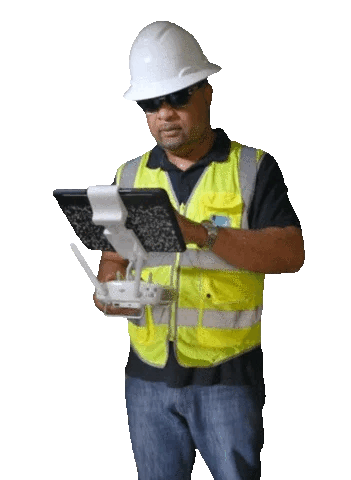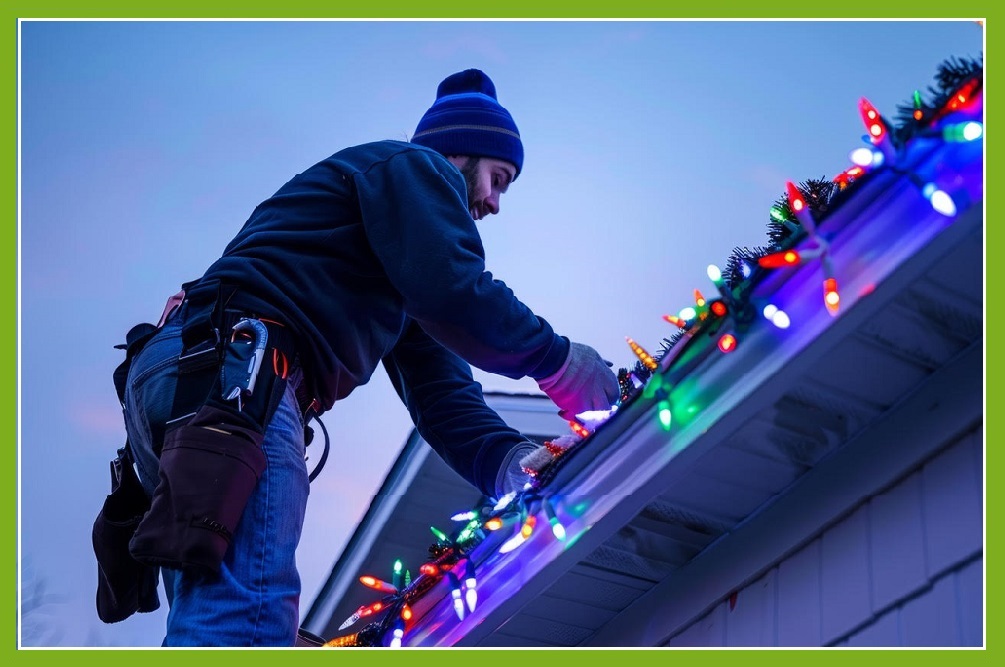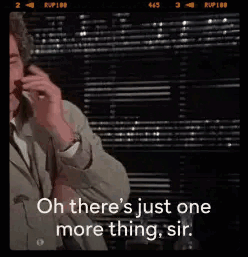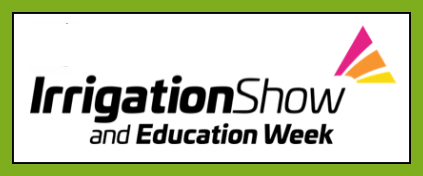
by Tom Barrett | Feb 12, 2025
Fitness Requirements to Remain
Safe and Productive
The very nature of irrigation and landscaping work demands a certain level of physical fitness.
From lifting heavy equipment to digging trenches and planting trees and shrubs in various weather conditions, green industry professionals routinely engage in activities that require strength, stamina, and agility.
Triple Threat: Strength, Endurance, and Flexibility
The constant lifting of irrigation pipes, rocks, bags of soil, and plants places particular strain on the back and arms. Maintaining a high level of physical strength is essential to perform these duties safely and effectively.
 Staying Fit Indoors
Staying Fit Indoors
If inclement weather has kept you indoors this winter, several fitness options are still available, even if you’re stuck at home.
INDOOR POWER WALKING
Designate a walking path in your home or office that you can complete several times a day while engaged in other activities, such as talking on the phone or listening to a podcast. Track your steps with a pedometer, Fitbit, or free phone app.
EXERCISE “SNACKS”
Exercise snacks are 20-second activities performed every one to four hours. They can include jumping jacks, burpees, jogging in place, or climbing stairs. Set an alarm on your phone to remind you to move throughout the day.
SCREEN TIME ACTIVITY
Use a treadmill or stationary bike to remain active during screen time. Alternatively, try walking in place for one to five minutes every hour or two.
USE A STANDING DESK
Aside from lessening sitting time, a standing desk will allow you to perform quick leg curls, stretches, and other small movements while standing. For a more intense experience, place a treadmill or a pedal exerciser under your standing desk.
Source: Live & Learn
In addition, irrigation and landscaping work often involves long hours of physical labor, sometimes under scorching sun or in pouring rain. As a result, workers must be able to sustain their energy levels to complete their tasks efficiently.
They must also be agile and flexible in order to navigate uneven terrain, maneuver various tools and equipment, and easily bend and stretch to avoid injury.
Remaining “Fit” for Work
Physical fitness is a dynamic attribute that can be cultivated and improved over time. As a green industry professional, exercising regularly outside of work hours is essential to maintain your necessary fitness levels, further enhancing your job performance.
The following exercises will help:
Abdominal Bracing
This exercise will help you avoid back injury.
Lie on your back with knees and hips bent, feet flat. Place your hands at your sides, just above your pelvic bones. Draw your belly button toward your spine while tightening the abdominal muscles. Hold the contraction for 3-5 seconds and perform 10 repetitions.
Chair Squats
This exercise will increase thigh strength.
Stand in front of a chair with feet slightly wider than your shoulders. Slowly lower yourself into (or just over) the chair without using your hands, then slowly stand back up. Repeat until your thighs feel tired, 10-20 repetitions.
Once you’ve mastered these squats, you can advance to dead weights, using five-to-ten-pound dumbbells in each hand.
Golfer’s Lift
This exercise helps reduce back strain when performing repetitive or light lifting tasks from ground level. It mimics a golfer’s motion when reaching the ground for a tee or ball.
In a standing position, pivot your trunk forward from the hip of the weight-bearing leg. Raise the other leg behind you to the same degree that your body moves downward. Then, lower down and return to standing. Repeat 10-20 times and then switch sides.
–Article Continues Below–

Farmer’s Carry
This exercise helps alleviate the awkward demand on the lower back and abdominal muscles caused by carrying heavy buckets on just one side of the body.
Hold in one hand a five-to-ten-pound dumbbell or a bucket filled partially with water or sand. Walk forward 10-20 steps, then turn around and switch hands, walking back to where you started. That’s one repetition. Repeat 5-10 times.
Wholehearted Effort
In addition to regular strength training, consistent aerobic exercise is critical to enhancing and maintaining cardiovascular health. Walking, running, cycling, and swimming are particularly beneficial if a component of your job is sedentary. Walking or running up and down stairs for 10-15 minutes can help release endorphins, improve circulation, and increase productivity.
The Big Picture
Irrigation and landscaping are physically demanding jobs requiring strength, endurance, and flexibility to avoid injury. Using proper techniques when lifting heavy objects or equipment and avoiding dehydration and fatigue will help.
But maintaining a well-conditioned body while off the clock further ensures you remain safe, productive, and ever “fit” for your job.
Sources:
Featured Image: Adobe, License Granted
Green Packs
Business Insider
Mountain Ridge Physical Therapy
Healthline

by Tom Barrett | Jan 20, 2025
Is Drone Technology the
Next Big Thing?
Green industry professionals are increasingly adopting drone technology to assist with irrigation and landscaping projects.
Also known as UAVs (unmanned aerial vehicles), drones are used commercially for landscape photography, videography, design, and site inspection. When paired with a remote control and two-way communication, they’re commonly referred to as an unmanned aerial system, or UAS.
Lightweight and rotor-equipped, drones are highly maneuverable and can be operated via remote control or smartphone. Most can fly for 30 minutes to an hour on a single charge, capturing detailed images for a fraction of the cost of other options — one reason the United States Golf Association (USGA) has been utilizing drones since 2015.
Aerial (Ad)Vantage Point
Drones provide landscaping professionals with a bird’s eye view of an entire job site, allowing them to collect aerial images and videos in real time. With these images, landscapers can quickly survey a job site, assess site safety, and monitor the effectiveness of irrigation systems.
 Peer Review
Peer Review
Irrigation and landscaping contractors who have successfully incorporated drone technology into their business model are quick to recommend it. Here’s what some of them have said:
“We draw [a landscape design] as though we’re seeing it from space, but before drones, we were never actually looking at the projects that way. The drone gives us a whole new perspective during the design phase and throughout its construction as well.” — Scott Cohen, owner of The Green Scene Landscaping, Chatsworth, California
“We have incorporated drones into our inspection routines. The drones are the size of a small laptop with a lens that can read if an area is too dry or too wet.” — Loren McIrvin, owner of Allied Landscape, San Francisco, California
“The [drone] imagery allows us to see patterns and identify irrigation issues we might otherwise have missed – that helps us save water and maintain better playing conditions.” — USGA Golf Course Superintendent Kevin Breen, Los Gatos, California
The current aircraft of choice for landscape and irrigation professionals is a four-rotor drone called a quadcopter. This drone is capable of covering as much as 75 acres, flying for up to 25 minutes per battery charge, depending on weather conditions.
When equipped with specialized cameras, some UAVs can analyze nitrogen management and soil compaction, assess plant health, and detect drought stress. They can also capture stunning footage of completed projects for promotional purposes.
Intelligent Design
UAV technology has also proven extremely useful as a design tool.
Drones enable landscape designers to create immersive “virtual tours” to help their clients make informed decisions. Instead of working from a traditional plot view, landscape architects can create a three-dimensional model from the geographical data (such as site terrain and natural features) collected by the UAV.
Drones can also collect data on climatic conditions and microclimates, allowing designers to incorporate environmental factors in their landscape elements. For instance, drones can help determine the optimal location of green space according to sunlight exposure and wind conditions.
Lastly, the drone-collected data can be shared with other personnel to quickly identify any problems for maintenance and design improvement purposes.
Rules for Drone Usage
Every drone weighing more than 0.55 pounds (about 0.249 kilograms) but less than 55 pounds (24.9 kilograms) must be registered with the Federal Aviation Administration (FAA). Failure to register may result in civil and criminal penalties.
Once registered, the drone owner will receive a Certificate of Aircraft Registration/Proof of Ownership with a unique identification number.
If you use a drone for business, you are using a drone for profit. Drones flown for commercial purposes must be specifically authorized by the FAA. In addition to registering the drone, you must also obtain an operator’s license from the FAA. There are many drone pilot license courses available online to help you pass the exam.
FAA authorization may be obtained in three ways:
- Following the requirements in the Small UAS rule,
- Following the rules in a Section 44807 grant of exemption, or
- Obtaining an FAA airworthiness certificate for the aircraft.
–Article Continues Below–

Many other FAA regulations apply to general UAV operations, such as:
- You may not fly your drone above 400 feet.
- You may not fly in a manner that interferes with operations and traffic patterns at any airport or heliport.
- You must be authorized to fly between the hours of sunset and sunrise.
- Your drone must remain within the sight of the operator at all times.
- You must obtain the owner’s consent before flying over private property.
For a complete list of all FAA drone usage regulations, check out Small UAS Rule Part 107. [A new FAA rule (Part 108), aimed at expanding drone operations across all industries, is expected to be finalized sometime this year.]
Proper drone operation is more complicated than it first appears. You can avoid any potential headaches by retaining a professional drone pilot. Alternatively, many professional agencies offer pilot training.
Stiff Penalties
The FAA does not take drone violations lightly. The FAA Reauthorization Act of 2024 allows the agency to impose fines of up to $75,000 per violation for drone operators who conduct unsafe or unauthorized operations. In addition, the FAA can suspend or revoke the pilot’s certificate for any offenders.
The Wild Blue Yonder
As always, the future of irrigation and landscaping is inextricably linked with advances in technology. Drones are one of the most visible examples of this evolution – perhaps one worth considering in your 2025 business plan.
Sources:
Featured Image: Adobe, License Granted
Total Landscape Care
Identified Tech
Lawn & Landscape
FAA
Drone Pilot Ground School

by Tom Barrett | Dec 4, 2024
Best Practices for Smooth and
Successful Expansion
Is your irrigation business ready for the next step? Are satisfied customers beginning to request services that are outside your current scope?
If so, 2025 may be the year to consider expanding your business and your reach. Here are some proven techniques to get you started.
What Do Your Customers Want?
Before you decide which services to add to your menu, find out what your customers want.
Conducting an online survey is a relatively quick and easy way to gauge customer needs and interests. Social media platforms like Instagram, X, and Facebook allow you to create a questionnaire for your followers. Some points to consider:
Green Industry Growth
by the Numbers

62% — Percentage of all landscaping customers who are residential homeowners.
5.6% — Percentage of market increase for residential landscaping services expected in 2025.
4.5% — CAGR between 2020 and 2025 for the U.S. landscaping market (nearly double the pre-Covid growth rate).
Source: Zippia
- Choose the right platform. Facebook, X, Instagram, and LinkedIn offer different tools and target different audiences, although they all offer a polling option.
- Keep it short and straightforward. Limit the number of questions and use clear and concise language to keep your audience engaged.
- Use visual aids. Incorporate images, GIFs, or videos to make your survey more engaging.
- Offer incentives. Encourage survey participation by providing incentives, such as discounts or freebies.
- Track and respond. Monitor the responses and thank participants for their feedback.
Once you’ve analyzed the data collected through your survey, you’ll be better positioned to make an informed decision.
Become an Expert
Before adding a new branch to your business, you must learn everything you can about the service you’ve selected to offer. Just because you can provide that service in a pinch doesn’t make you an expert. You must become proficient.
That means thoroughly training yourself and your staff before offering your customers a new professional service. Landscaping suppliers and numerous lighting vendors offer on-site and online training sessions on various subjects.
If you think adding drainage services may be the way to go, the experts at Site One have some ideas to get you started:
Whatever service you decide to add, training your crews during the off season will ensure they’ll be ready to roll come Spring.
Timing Is Everything
Make sure you’ve truly mastered your new service before launching it. A Florida-based contractor explained how his company added a service before it was ready, and it almost backfired: “We made so many mistakes because we hadn’t done enough due diligence before releasing the service that clients were losing confidence in us…It could have been a disaster.”
Even if the new service seems to fall within your skill set, that doesn’t mean it’s time to roll out that service to your customers. It must be the right time for your business to expand.
“I’m in a very fast-growing section of Ohio, and I knew that there weren’t a whole lot of people doing lighting in my area…[so I began] adding those services to the business.”
– Adam Puhl, Puhl Landscape Design
Analyze the industry and market opportunities. Are they increasing? If so, there’s a good chance your company can capitalize on that growth.
Dollars and Sense
Once you understand the market and the service you intend to add, it’s time to explore the financials to determine if you have the wherewithal to invest in the equipment, training, or talent necessary for expansion.
Look for ways to optimize current revenue streams by allocating labor and equipment methodically. For instance, instead of hiring new staff to initiate the service, cross-train current employees who desire to learn new skills and assume more responsibility. You could also repurpose some of your current equipment to reduce overhead or consider renting the necessary gear rather than investing in new equipment.
–Article Continues Below–

When pricing your new service, avoid undercutting your competitors. That would only drive down the market and adversely impact everyone’s profit margin. Instead, talk to your suppliers to gauge the local market effectively while recognizing that it may take a while to find your optimal pricing schedule.
Continuing Education
Once your new service is up and running, continue learning as much as possible about it. (You want to be more knowledgeable than your customer!) Education and experimentation are the keys to success when expanding your service menu.
Sources:
Featured Image: Adobe, Licenses Granted
Irrigation & Lighting
Forbes
ReadWrite

by Tom Barrett | Nov 6, 2024
Three Reasons Why You Should Include
Holiday Lighting in Your Service Menu
Did you know…
- The global holiday lighting and decor market is expected to reach $10.87 billion by 2031.
- Sixty percent of American homeowners install outdoor holiday lights.
- Twenty-two percent of Americans think their neighbor’s decorations are too tacky.
If you haven’t added lighting installation to your menu of services, there’s no time like the present!
Ohio green industry contractors are particularly well-situated to offer holiday lighting to their customers. According to a 2021 survey by Lombardo Homes, Ohioans are more likely to decorate their homes for Christmas than residents of any other state.
Here are three reasons you should consider installing holiday lights:
#1. Holiday Lighting Is a Growing Industry
 Landing the Client
Landing the Client
One of the best ways to generate interest in your holiday lighting services is to create a web-based landing page, also known as a “virtual flyer.” This standalone web page should be created specifically to advertise holiday light installation.
Marketing experts offer the following tips for landing page design:
- Use large, readable, and simple (i.e., san serif) font and simple, complementary color schemes that are easy on the eyes.
- Stock images may be used when you’re first starting out; after that, switch to before and after pictures of your work.
- Include a list of your holiday lighting services (design, installation, maintenance, removal, storage, etc.)
- Make sure your contact information is highly visible.
- Include a clear call-to-action (CTA), such as: “Call (000) 111-2222 for a free estimate!” Place your CTA in a visible spot, using a large, bold, simple font and an eye-catching color. Another option would be to offer a discount to new clients, such as: “NEW CUSTOMERS: Sign up before [date] and get 20% OFF your first holiday lighting service!”
- Keep your landing page design clean so it doesn’t distract from the CTA and contact information.
Source: Service Autopilot
The compound annual growth rate (CAGR) for the holiday lighting market is currently 4.13% and has demonstrated consistent growth since COVID. (See first bullet point above.) This increase is fueled by LED technology, expanded outdoor lighting options, and a surge in demand for smart and programmatic holiday lights.
Consistent growth suggests strong profit potential for green industry professionals to earn year-round revenue. Installing residential holiday lighting can help you:
- Revitalize off-season income
- Retain valuable crew members
- Promote your business throughout the year
#2. Most Homeowners Plan to Display Holiday Lights
The residential section dominates the Christmas lights and decorations market, with 60% of American homeowners planning to display holiday lights. This presents a huge opportunity for your irrigation or landscaping business.
More than ever, homeowners are predisposed to pay for professional lighting installation instead of doing it themselves. Licensed installers are busier than ever, especially in newer housing developments, where the homes have high peaks and roof lines.
And since most of your current customers already intend to display festive illuminations, you can simply cross-sell your services!
Kyle O’Hearn, the owner of Pro Lights in Cleveland, has watched business explode since they added Christmas light installation to their menu. O’Hearn told Cleveland.com that his company generated $90,000 in two months during the first year of offering holiday lights. Last year, they brought in more than $1 million. Other professional installers have witnessed the same trend.
“When we got into it, people looked at us like we were crazy. [Now] we have more leads than we know what to do with.”
– Kyle O’Hearn
Owner, Pro Lights
Cleveland, OH
#3. Professional Lighting Installations Never Look Tacky
By offering your customers plenty of design options, you can help ensure their holiday display looks dramatic – but never tacky or over-the-top. (See third bullet point under “Did you know…” above.) You’ll understand how to incorporate roof lines, tall trees, and entryways without the use of multiple extension cords and unsightly wiring.
Custom-cut main wiring and other techniques will conceal wires and ensure safety for your customers and their guests. Accessing hard-to-reach areas of a home’s exterior will also help you achieve a well-balanced display.
There are a number of software programs that will help you create the perfect holiday lighting display for your customers. Many of these programs allow you to design and measure in one step by uploading a photo of the home. You can also input custom pricing for instant estimates.
–Article Continues Below–

Final Thoughts
Once you begin holiday lighting installation, you’ll likely discover that it’s both a satisfying and emotional business. Some of your customers’ most precious memories are tied up in the holidays. Your company can play a key role in those sentimental reflections.
Sources:
Featured Images: Adobe, License Granted
Verified Market Research
Service Autopilot
New York Post
Irrigation & Lighting
Big Star Lights

by Tom Barrett | Oct 9, 2024
Tales of Terror
From the Front Lines
As an irrigation contractor, you never know what lies ahead on the next job site.
Even the most routine maintenance or repair can devolve into a harrowing ordeal. In the spirit of Halloween, we share with you some irrigation horror stories — seemingly straightforward service calls that quickly became the stuff of nightmares.
Horror Story #1: The Twisted Root
Repairing a lateral line leak sounded like a simple job–until the irrigation technician realized that the system’s lines were located under a river birch tree and entangled in the roots. All of the components, including a six-valve manifold, were covered and ensnared by the overgrown tree roots.
After two days of chopping up the roots, the technician was able to repair the leak. Two weeks later, the river birch was blown over during a hurricane, tearing out some of the irrigation system components. Now, everything in that section had to be replaced. The stump had to come out.
“We had to hook lines up just to figure out what zone went where and what valve went back to what,” the technician said.
Two techs and two managers then hacked away at the stump and remaining roots for three and a half days. The simple repair job had morphed into a monster (and a monster bill for the homeowner).
Horror Story #2: Poltergeist in the Line
A routine valve replacement at a customer’s residence went smoothly–until it didn’t. As the technician was preparing to leave, the new valve fittings popped off. The tech reglued them and waited a few more hours for the glue to cure. They popped off again.
 Chilling Words
Chilling Words
Sometimes all it takes is a few seemingly innocent words from the customer to send chills down an irrigation professional’s spine:
- “Hey, so I have a little leak. Shouldn’t be a big deal. Can you squeeze me in today? Twenty minutes tops.”
- “Could you swing by and set my timer for me?”
“Sure.”
Get there, set the timer, conversate the pleasantries, and walk back towards the van.
“Oh, hey, while you’re here…”
- “We call them the ‘Columbo’ customers. A [baby] boomer or any well-versed younger generation would understand.”
- “I personally LOVE the ‘I just have a broken head’ that is actually a weeping valve, and the valve boxes haven’t been seen in 15 years. And then the timer is in the basement, so using a wire tracker is slightly better than poking around with a shovel or a long-ass screwdriver.”
Aiming to please — all in a day’s work!
Source: Reddit
The homeowner’s water was shut off for a full 24 hours to secure the connections once more. The tech returned the next day and turned on the water. Once again, the fittings popped off. He was utterly baffled.
The technician returned to the residence three more days, attempting to fix the problem before finally throwing up his hands and seriously considering a career change.
While driving home on that last day, the technician witnessed a geyser of water shooting 100 feet up in the air over the highway. Turns out it was a leak in the same main line he had been working on for the better part of a week.
Eureka! By threading on a pressure regulator at the main, his customer’s problem was finally remedied.
Horror Story #3: Shock Treatment
When a California irrigation contractor answered a service call about a system that was watering only one side of a highway, he discovered a mangled mess of wiring and water lines running beneath eight lanes of roaring freeway traffic.
After three days of investigating, the contractor finally discovered another master valve buried under the emergency-lane asphalt. He dug up the valve to check the wires on the solenoid. When he did, the resulting shock knocked him off his feet with a severe jolt.
“I’m sitting on my butt on the ground thinking that something was wrong because 24 volts will give you a buzz, but it won’t hurt you,” the contractor said.
Using a wand tracer, he traced a strange-looking controller wire to a deeply buried splice box labeled “street lighting.” Someone had connected the irrigation wiring to a 220-volt electrical line that powered a traffic light.
It took two more weeks of arduous investigation, rewiring and replacing parts before the irrigation system was working properly on both sides of the highway. One year later, the state highway department expanded the road and tore out the entire system.
Gear Up for Irrigation Show 2024!
November 4-7 in Long Beach, California
 The world’s largest irrigation exhibition features the latest developments in irrigation technologies, with hundreds of exhibitors and numerous educational opportunities.
The world’s largest irrigation exhibition features the latest developments in irrigation technologies, with hundreds of exhibitors and numerous educational opportunities.
Whether you’re a beginner, intermediate, or advanced irrigation professional, you’ll find what you need to enhance your industry knowledge. This year, five new classes will focus on hydraulics, pump curves, soil/water interaction, and more. Purchase two classes and receive a 100% discount on Irrigation Show registration.
Irrigation Association members save $100 on registration — students are free!

Sources:
Featured Image: Adobe, License Granted
Irrigation & Lighting
Irrigation & Green Industry
Reddit

 Staying Fit Indoors
Staying Fit Indoors


 Peer Review
Peer Review




 Landing the Client
Landing the Client

 Chilling Words
Chilling Words The world’s l
The world’s l




